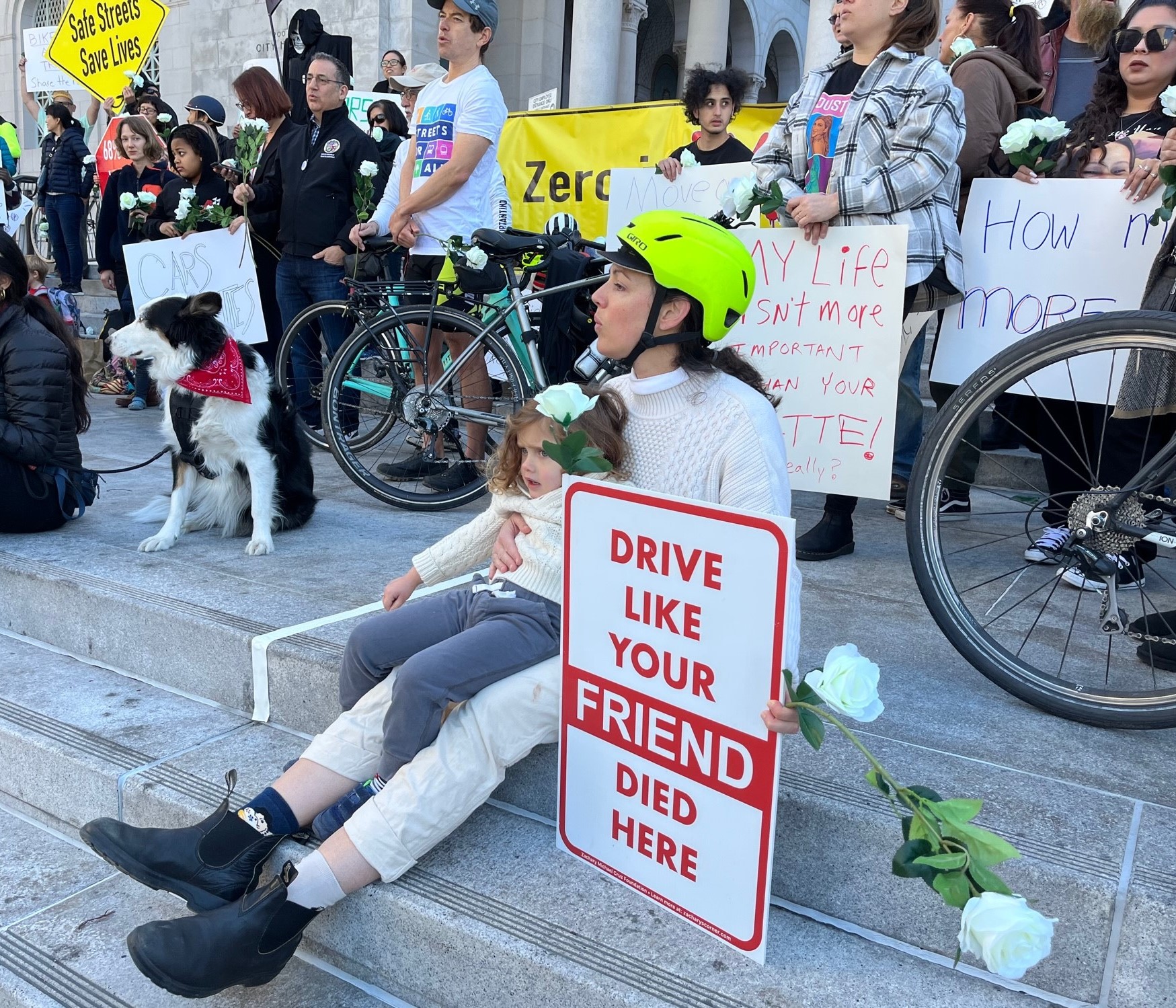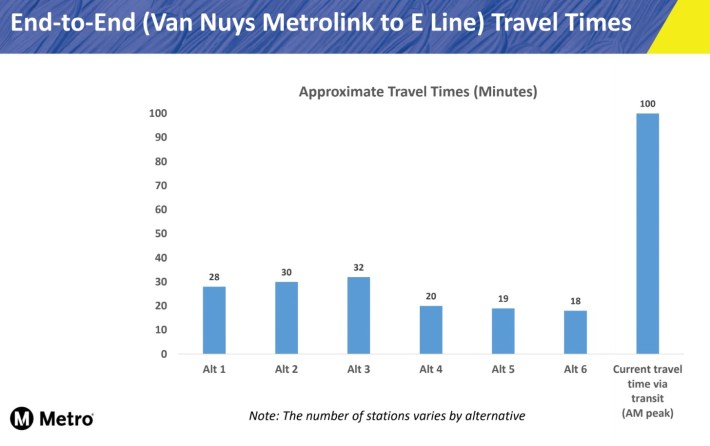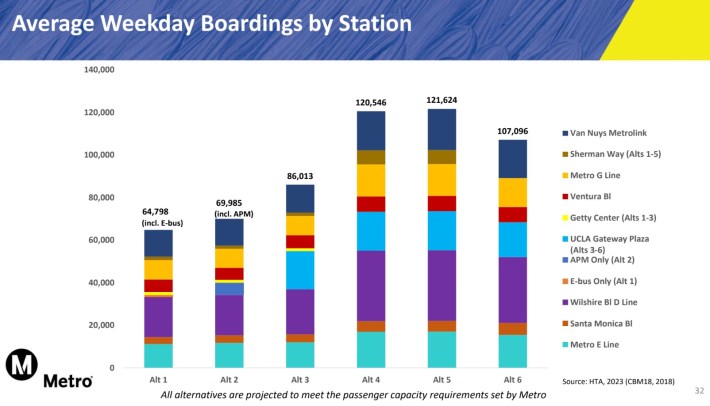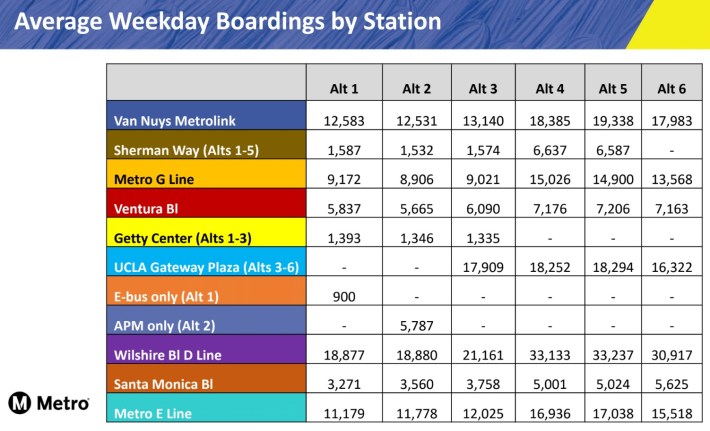Thursday Round-Up: L.A. Speed Camera Pilot, Metro Sepulveda Rail, and Crash Not Accident
More reasons to ridicule proposed Metro Sepulveda monorail. L.A. will officially use "crash" or "collision" instead of "accident." And L.A. starts laying the groundwork for a speed camera pilot.
1:42 PM PST on November 9, 2023

January 2023 Die-in protesting L.A. traffic violence. Photo by Joe Linton/Streetsblog

It's the Thursday before a three-day weekend, so statistically none of you are actually reading this scintillating round-up of recent news bits.
L.A. City Council Motion Gets Ball Rolling on Speed Camera Pilot
California recently passed A.B. 645, which allows cities to pilot automated camera enforcement to curb deadly speeding. The bill sets a lot of tight parameters for deploying cameras: only in specific cities (including L.A., Glendale, and Long Beach), community processes, notice, specific types of locations, monitoring, etc.
Yesterday, the L.A. City Council approved a Bob Blumenfield/Nithya Raman motion (council file 23-1168) that starts to lay the groundwork for an L.A. City speed camera pilot.
In early 2024, the Transportation Department (LADOT) will report back with a workplan, timeline, proposed locations for speed cameras, and additional items to ensure city compliance with state law.
See additional L.A. speed camera pilot details at LAist coverage of earlier committee approval.
L.A. Council Approves Clearer Wording for Crashes
Also yesterday, the City Council approved a Bob Blumenfield motion (council file 23-1051) that make it city policy to
officially adopt the terms “crash,” “collision,” and “incident,” in lieu of the term “accident” when discussing traffic crashes in any document or communication, except for instances where the City Attorney deems it necessary to use “accident” in litigation and related matters.
For decades, street safety advocates have pushed for this more accurate language usage, via "crash not accident" and "drop the A word" Vision Zero campaigns. Terming a traffic violence event an "accident" can "absolve the driver — and transportation decision-makers — of any agency or responsibility."
"Crash not accident" has been adopted by various transportation agencies, media organizations, and others. This week it became L.A. City policy. It's a tiny step that does little on its own to change L.A.'s alarming traffic violence, but hopefully it can help foster a shift in people's attitudes.
Metro Projections show that Rail Makes Sense for Sepulveda
It's hard to believe that, in 2023, Metro is still somehow considering a mid-freeway monorail for its Sepulveda Transit Corridor project. It's one of those truly wretched non-starter ideas (like Metro MicroTransit and Metro illegally widening streets in front of stations) that this Streetsblog editor has difficulty writing about halfway objectively.
Metro's current mid-freeway stations are hellish, loud, polluted places. Even Metro calls them "what not to do when building a transit line... making the train hard to reach by sticking the tracks mostly in the middle of a busy, loud, smog-producing freeway." Just don't. Don't.
The mildly good news is that Metro's latest ridership projections should kill the monorail in its tracks, er, track. And if crappy ridership isn't enough, then market conditions and federal Buy America law could kill that zombie again and again.
Metro already shared monorail-damning travel time and ridership projections back in 2019. In the past couple weeks, Metro shared new refined projections that further confirm that, looking at ridership and travel time, heavy rail alternatives make more sense.
Metro's refined forecast shows a greater contrast between the modes. Anticipated monorail ridership is significantly lower (was 122,000 in 2019, now 65,000-86,000) while anticipated heavy rail ridership is just below earlier figures (was 126,000-137,000 in 2019, now 107,000-122,000).
Below are selected slides from Metro's latest Sepulveda Transit presentation:




Other than being a markedly inferior product, there two other wrinkles that further doom Sepulveda monorail.
Current interest rates cast a doubt on the viability of any of the five public-private partnership alternatives (1-5). Much of the private profits were expected to be facilitated by low-cost financing that does not appear feasible right now. If Metro wants to proceed with any Sepulveda project in the near-term future (while current high interest rates continue), then standard Metro-operated heavy rail (alternative 6) appears to be most likely.
Lastly there are federal 'Buy America' laws that would largely prohibit federal funding going to a monorail project built by BYD, which is a Chinese company. Perhaps the monorail alternatives were never going to rely on federal money, though that might be difficult. Last month, the Metro board approved a motion by Supervisor Lindsey Horvath directing to Metro staff to analyze federal Build America, Buy America Act impacts on future Metro infrastructure projects. Metro's evaluation, due in March 2024, could help clarify this issue, and its implications for Sepulveda Transit.
For a very good recap of recent Sepulveda Transit findings, see Metro says subway will move people between Valley and Westside faster than monorail by Steve Scauzillo at the Daily News.
Read More:
Stay in touch
Sign up for our free newsletter
More from Streetsblog Los Angeles
Metro Board Funds Free Student Transit Pass Program through July 2025
Metro student free passes funded another year - plus other updates from today's Metro board meeting
Eyes on the Street: New Lincoln Park Avenue Bike Lanes
The recently installed 1.25-mile long bikeway spans Lincoln Park Avenue, Flora Avenue, and Sierra Street - it's arguably the first new bike facility of the Measure HLA era




